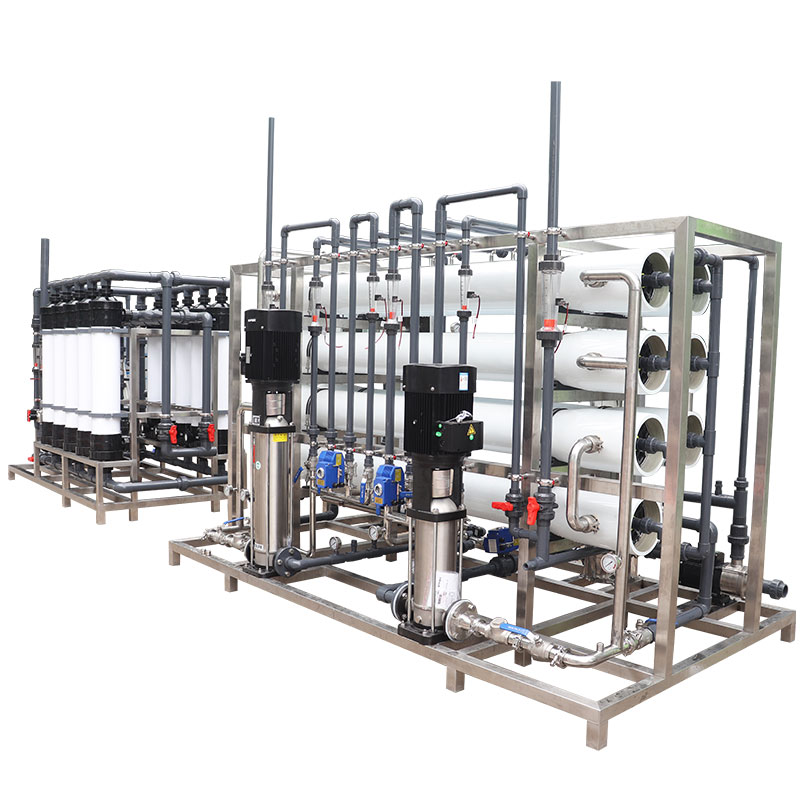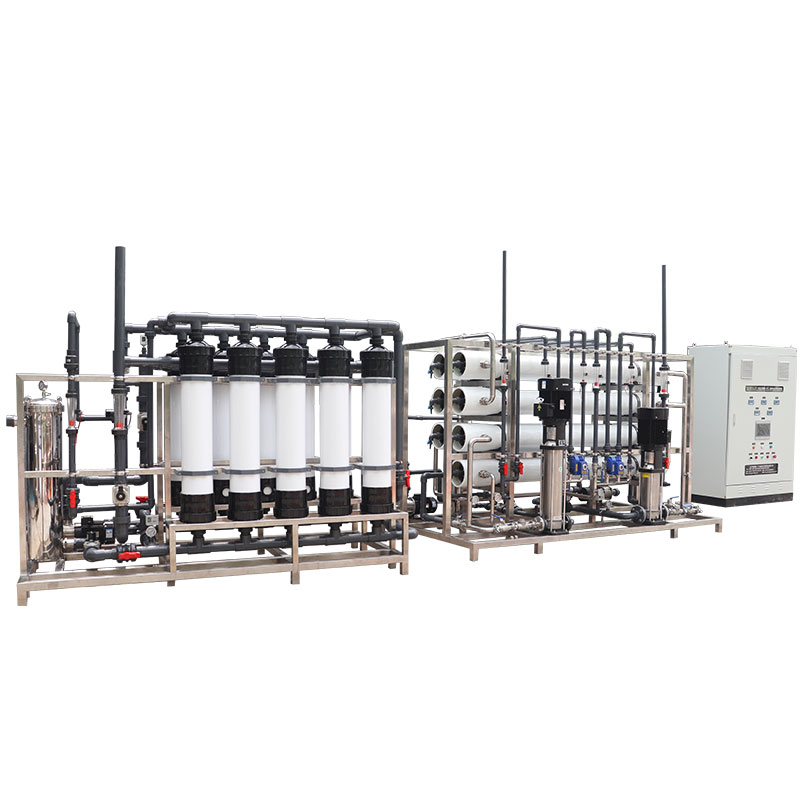What can be used as water filtration media?
Water filtration technology plays a vital role in ensuring safe drinking water. Among them, the choice of water filtration media is a key factor in ensuring the filtration effect.
So, what materials can be used as water filtration media? This article will introduce various common water filtration media and their advantages and disadvantages in detail, providing a reference for everyone when choosing a home or industrial water treatment system.

What is water filtration media?
Water filtration media refers to materials used to remove pollutants such as suspended particles, microorganisms, organic matter and inorganic matter in water. Different filter media have different physical and chemical properties and are suitable for removing different types of pollutants. The choice of filter media directly affects the filtration effect, water filtration speed, maintenance frequency and service life.
What are the common water filtration media?
1. Activated carbon
● Advantages: Activated carbon is one of the most common water filtration media and is widely used in household and industrial water treatment. Its porous structure provides a huge surface area, which can effectively adsorb organic matter, chlorine, odor and some heavy metal ions in water. Activated carbon also has a strong decolorization ability and can remove organic dyes in water.
● Disadvantages: Activated carbon cannot remove all types of pollutants, such as dissolved solids and certain inorganic substances. After a period of use, activated carbon will be saturated and need to be replaced or regenerated regularly. In addition, activated carbon filters require more frequent maintenance.
2. Sand and gravel filters
● Advantages: Sand and gravel filters are traditional water filtration media, mainly used for pre-filtration and physical filtration. Sand filters can effectively remove suspended matter, particles and sediments in water, while gravel filters are used to support and evenly distribute the filtered water flow. Their advantages are low price and simple maintenance.
● Disadvantages: Sand and gravel filters are mainly used for coarse filtration and cannot remove fine particles, microorganisms and dissolved pollutants. Therefore, they are usually combined with other filter media to provide a more comprehensive filtration effect.
3. Ceramic filter element
● Advantages: Ceramic filter elements have a micron-level pore size, which can effectively filter bacteria, parasites and other microorganisms to ensure the hygiene and safety of water. Ceramic filter elements can be cleaned repeatedly and have a long service life, making them suitable for home use.
● Disadvantages: Ceramic filter elements have a slow filtration speed and are not efficient when processing large flows of water. In addition, ceramic materials are brittle and easy to break, requiring careful maintenance.
4. Ion exchange resin
● Advantages: Ion exchange resin removes hardness ions (such as calcium, magnesium) and certain heavy metal ions in water through ion exchange, and is mainly used to soften water and remove specific ions. It can effectively prevent scale formation and protect household appliances and pipes.
● Disadvantages: Ion exchange resin needs to be regenerated regularly, usually with a salt solution, which increases operational complexity and maintenance costs. In addition, it cannot remove all types of pollutants and usually needs to be used in combination with other filter media.
5. Ultrafiltration membrane
● Advantages: The pore size of ultrafiltration membrane is very small, usually between 0.01 and 0.1 microns, and can effectively remove bacteria, viruses, colloids and suspended solids. Ultrafiltration membrane has a high filtration accuracy and is suitable for drinking water and industrial water treatment.
● Disadvantages: Ultrafiltration membranes are easily clogged by pollutants and need to be backwashed and replaced regularly. In addition, ultrafiltration membranes have limited removal effects on soluble pollutants (such as heavy metals and organic compounds).
6. Reverse Osmosis Membrane
● Advantages: Reverse Osmosis (RO) membrane is one of the most sophisticated filtration media currently available, with a pore size of about 0.0001 microns, which can effectively remove almost all pollutants, including dissolved solids, heavy metals, microorganisms and organic matter. RO membrane provides the purest drinking water.
● Disadvantages: The filtration process of reverse osmosis membrane produces wastewater, and it is usually necessary to discharge 1-3 times the amount of wastewater produced. In addition, the initial investment of RO system is high, and the maintenance and replacement costs are also high.

What are the emerging water filtration media?
1. Graphene membrane
● Advantages: Graphene membrane is a new type of high-efficiency water filtration medium with excellent mechanical strength and conductivity. The pore size of graphene membrane is very small, which can effectively remove salt and harmful substances while maintaining efficient water flow. Graphene membrane has a long service life and strong anti-fouling ability.
● Disadvantages: The production cost of graphene membrane is currently high, and its application has not yet been widely popularized. In the future, with technological advances, the cost is expected to decrease and the application prospects are broad.
2. Biofilters
● Advantages: Biofilters use the metabolic activities of specific microorganisms to decompose organic pollutants and ammonia nitrogen in water. They play an important role in water treatment, especially in sewage treatment and ecological water restoration.
● Disadvantages: The operating conditions of biofilters are relatively harsh, and they need to maintain appropriate temperature, pH and nutrients. Its treatment efficiency and stability are affected by many environmental factors, and the operation is more complex.

What should I pay attention to when choosing water filtration media?
Choosing a suitable water filtration media requires considering multiple factors, including water quality, filtration goals, equipment type and economic costs. Here are some selection suggestions:
1. For different pollutants
● Suspended matter and particulate matter: choose sand filtration, gravel filtration or ultrafiltration membrane.
● Organic matter and odor: activated carbon is the best choice.
● Bacteria and viruses: ceramic filter element, ultrafiltration membrane or reverse osmosis membrane.
● Hardness ions: use ion exchange resin.
● Multiple comprehensive pollutants: reverse osmosis membrane provides the most comprehensive filtration effect.
2. Comprehensive consideration of cost and maintenance
High-efficiency filter media usually have a higher initial investment, but in the long run, maintenance frequency and cost also need to be considered. For example, activated carbon and ultrafiltration membranes have lower maintenance costs but need to be replaced and cleaned regularly, while reverse osmosis membranes have a high initial investment but provide the purest water quality.
3. Combined use
In practical applications, it is often necessary to combine multiple filter media to achieve the best water purification effect. For example, the pre-sand filter is used to remove large particles, the activated carbon filter removes organic matter and odors, and finally the reverse osmosis membrane is used for precision filtration.
Conclusion
The selection of water filtration media is an important part of ensuring the safety of domestic and industrial water. Different filter media have their own advantages and disadvantages, and they need to be reasonably selected according to the specific water quality and usage requirements. With the development of science and technology, the emergence of new filter media such as graphene membranes and biofilters has provided more efficient and environmentally friendly options for water treatment.




